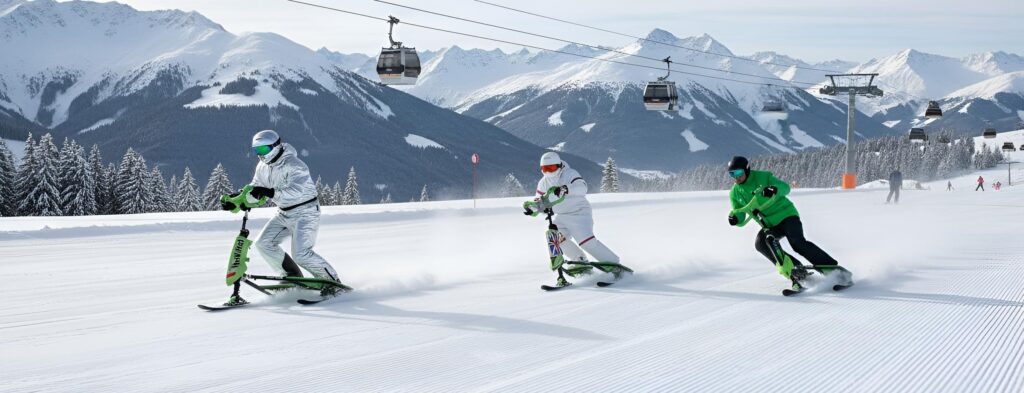Safety. Quick learning. No leg pain. No injuries. No ski bindings. Just... Stand and Ride Be unique, stand out on the slopes!
The Skki Trikke compared to two skis
Winter Skki Trikke consists of three skis with spatial bindings. Thanks to three skis, there is constant 3-point contact with the snow. As you might remember from your physics classes, there are three points that define a surface. Therefore, if all three skis are in consistent contact with snow, it’s impossible to fall over. In terms of that case doble-skiers (who are in contact with the snow by 2 tangent points) suport themselves from time to time by “adding” a third tangent point known as ski pole. Riding the Skki Trikke allows you to feel free on the slope by creating a safe space for your winter recreation.
1-0 for Skki Trikke
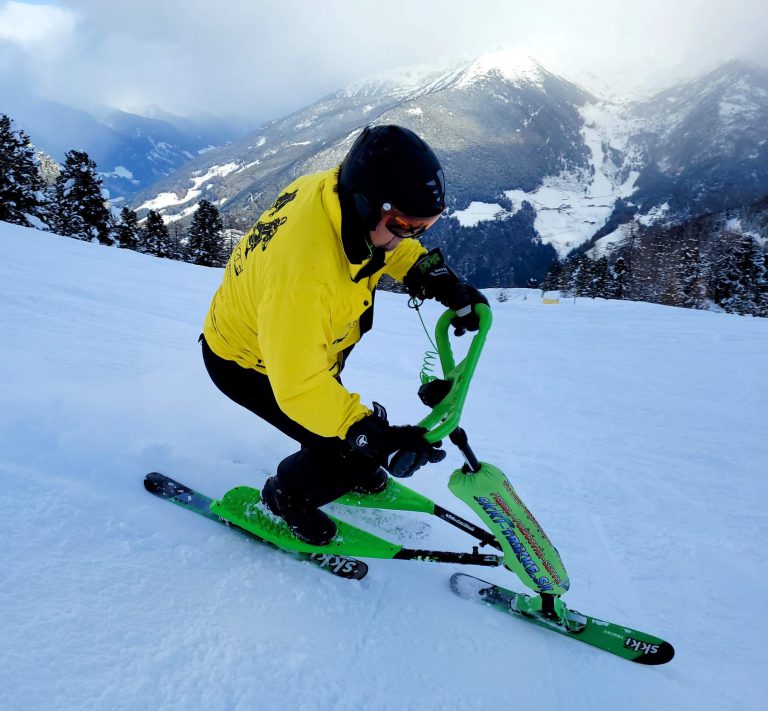
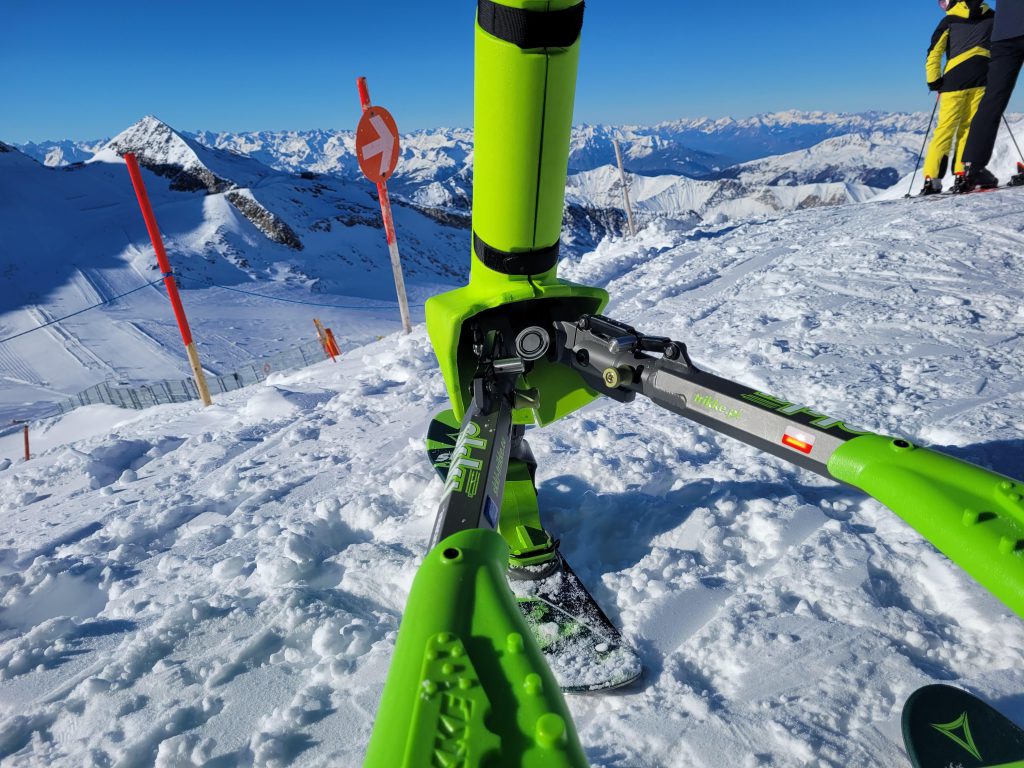
The Skki Trikke frame and the innovative articulation above the front ski revolutionize skiing. Owing to a solid frame, three skis will never move away from each other what makes the control over rinding always maintained. The type of driving technique doesn’t really matter in that case because despite of the slope conditions (moguls, ice), there will always be full control over the Skki Trikke. The frame determines likewise equal angle inclination of each ski edge against the ground. That fact guarantees complete equipment control at every turn! Thanks to these properties full ski edge always touches the snow!
2-0 for Skki Trikke
You wear regular, winter boots,
no need of wearing ski boots
Double-skiers may know best that stiff and tight ski boots determines only one foot position and causes massive pain. This characteristic is especially acknowledged after a full-day schussing down the slope. Doube-ski users are known to say that the coolest thing about riding two skies is taking off the ski boots in the evening. The Skki Trikke rider wears very comfortable, warm, soft winter boots that wearing them do not cause any pain. Some of our clients have got deformed feet or damaged ankles therefore they are not capable of wearing thick, stiff ski boots and the only comfortable solution for them is to ski in regular winter boots. Accordingly, the Skki Trikke is the most convenient and enjoyable possibility of skiing.
3-0 for Skki Trikke
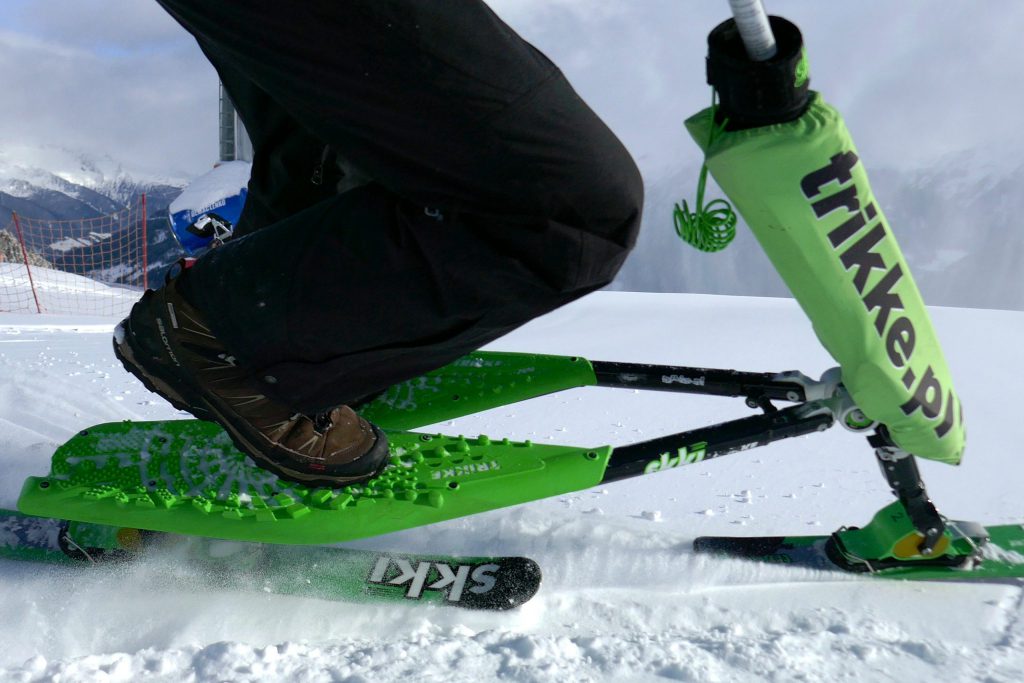

One of the biggest advantages of winter Skki Trikke skiing is no permanent ski bindings connecting the rider with equipment. On the other hand, consistent joint occurs in every other winter sport such as two-skiing and snowboarding. While loosing control over the ride (because of a lots of moguls for example), the rider’s rapid fall is controlled by ski equipment, not by the rider. At the last moment of fall the skis release two boots from bindings but usually the damage such as injury is already done (while snowboarding, the board does not separete itself from feet at all!).
Riding the Skki Trikke doesn’t require being permanently attached to it, you can jump off and jump away quickly from the equipment. The only attachment connecting the rider with equipment is an elastic lanyard (which can be put on the arm or leg). This application prevents equipment from uncontrollable moving down the slope. However, the Skki Trikke during all the tests after sliding down the piste for a few meters, tips over and stops itself even without a leash. In the new Skki Trikke 2017 model exists a new type of lanyard that can be attached especially to the leg.
4-0 for Skki Trikke
In the evenst of an accident, the impact of a collision with a 15 kg Skki Trikke will certainly be smaller than with a 100 kg human (skis, heavy ski boots, poles, the skier’s weight). Moreover the frame of winter Skki Trikke is in triangular shape so it either “pushes” the obstacle away or pushes itself away from the obstacle (wedge action, force distribution on the triangle, the resultant force is much weaker than the one occuring with perpendicular type of force). Anyway, there have been no accidents or ski injuries involving Skki Trikke since 2005 (the year of equipment being produced for the first time). This applies not only to Poland, but also to Europe and the USA!
5-0 for Skki Trikke
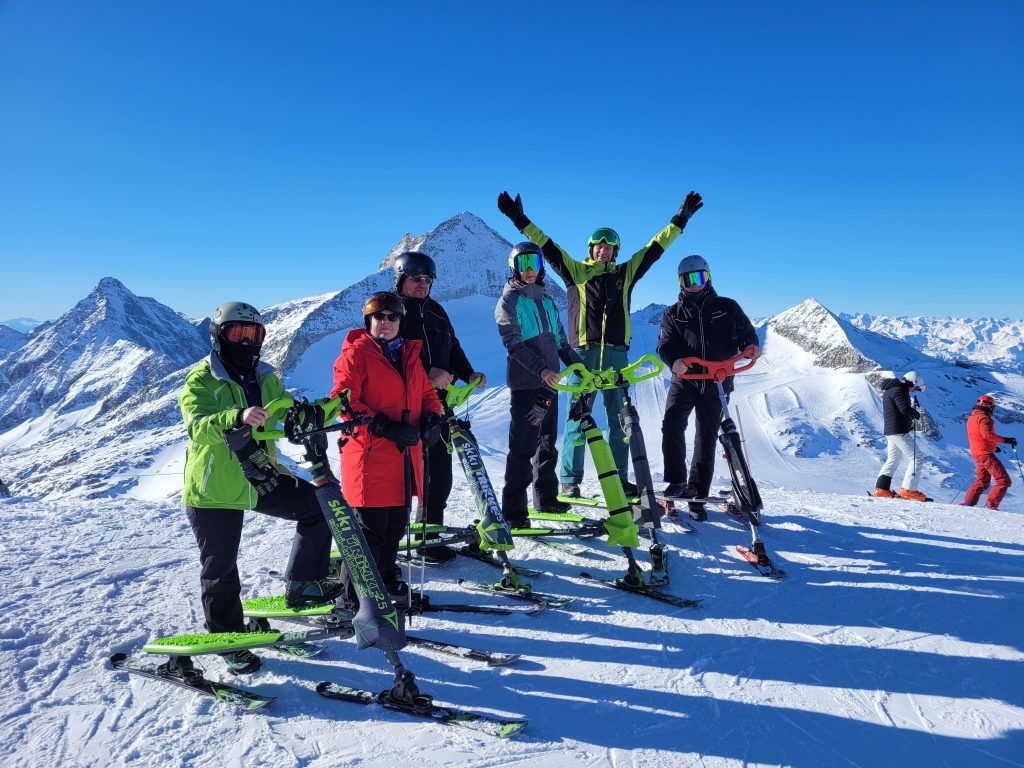
When riding a snow Skki Trikke, turning it and holding the edge, there is NO KNEE ROTATION or other unnatural movement for this joint in the leg. This bane is typical for double-skiers and the cause of most ski injuries! The edge of the Skki Trikke is held with the inner hand, the force in the leg goes along with the bone, passes through soft winter boots to the platform and presses the ski against the snow. The hand and forearm muscles, biceps, triceps, shoulder girdle, trapezoidal muscles at the spine work on edge control, placing the equipment at the angle chosen by the rider.
6-0 for Skki Trikke
Another great thing about Skki Trikke skiing is the usage og many rider’s body parts in order to control the wehicle. When it comes to two skis or a snowboard there is mostly legs muscle usage. For this type of skier, two hours of skiing leads to drop of strength, control over the equipment, and by the third day, great soreness and inability to climb stairs comfortably. Lack of strength equals no technique, and no technique equals no driving control. However, in the ski Skki Trikke, 50% of the lower body and 50% of the upper body control the equipment. Hence, Skki Trikke riders aren’t familiar with the concept of muscle aches, leg pain or losing control over riding. We ride twice as much and twice as safer than two skiers or snowboarders.
7-0 for Skki Trikke

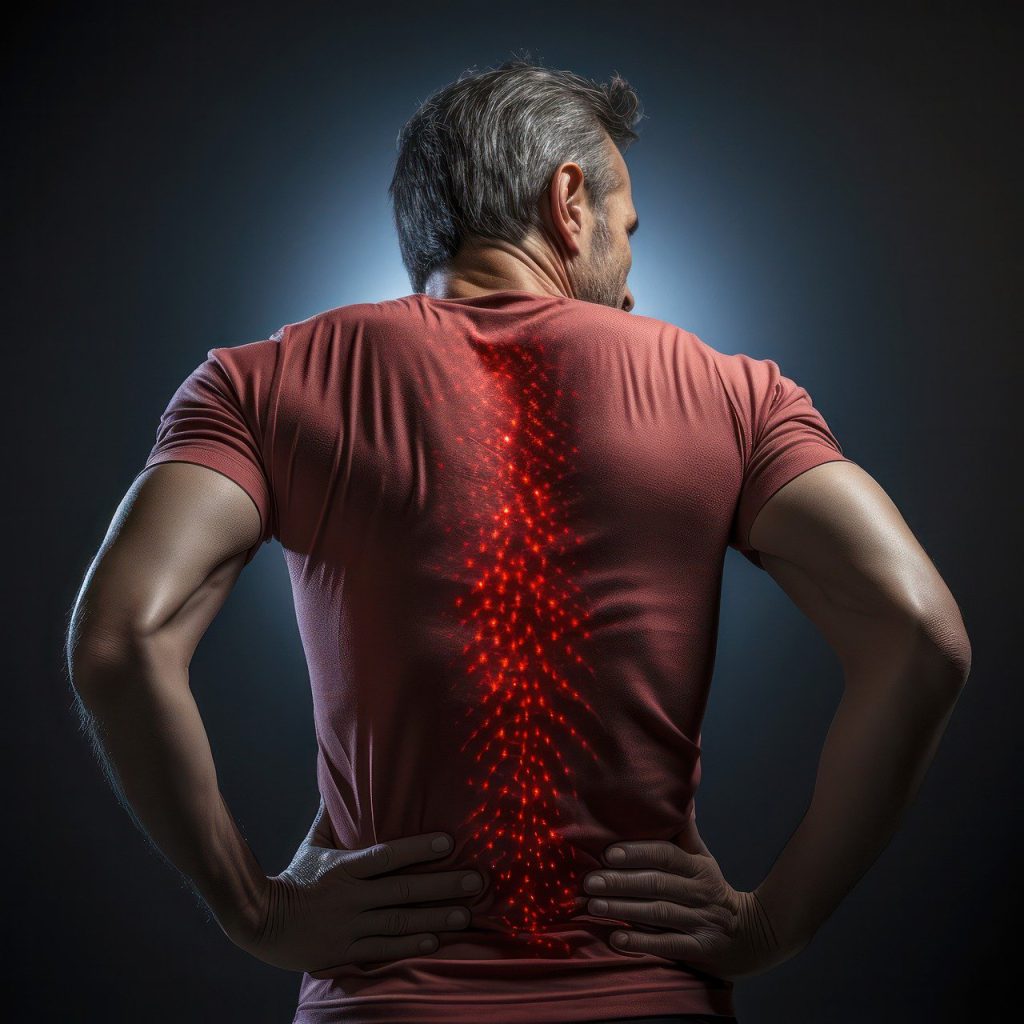
Back problems-free
For people with such problems, using Skii Trikke as winter sport is the only solution to get rid of the muscle and spine problems . While riding the Skki Trikke the rider rests comfortably on the handlebars and relieves his spine, which allows him to ease this part of the body and ski without any pain. Winter Skki Trikke is a fun on the snow without discomfort and problems.
8-0 for Skki Trikke
Learning to ride this ski equipment takes 15 minutes
Riding the Skki Trikke is falling over free. After an hour of skiing, the rider has 100% control over the equipment and is able to control the speed and direction of travel just as an experienced and longtime double-skiers do! Here you can click on the link (WitówSki) where you can find a clip of rider’s first ever lesson on Skki Trikke: Can such a ride be called dangerous?
In Skki Trikke the time to fully master the equipment has been reduced to an absolute minimum comparing to two skis or snowboard! Commonly known, in double-skiing or snowboarding the largest amount of accidents happens due to the lack of speed and direction control. This is the most dangerous time during the whole process of learning skiing and often ends with collisions or addicents on the slope. How long does it take to properly train a double-skier to control the speed and direction of travel on each type of ski run? A week, two, a month, a season, two or three seasons …….? A lot of ………. definitely longer than 15 minutes which is the case with Skki Trikke!
9-0 for Skki Trikke
Easily controlled on moguls and icy, unprepared ski slope
When it comes to Skki Trikke, the slope conditions doesn’t matter in the long run, as the riders are able to easily control the equipment under any circumstances. Ice, moguls or crowded slope don’t lessen the ability to enjoy the ride. You can see the basics of the Skki Trikke ride in the video on the left side:
Ice riding – from 0 min 0 sec to 1 min. 38 sec (snowboarders and double-skiers-free icy slopes due to harsh piste conditions and general fear of the increassed possibility of an injury or accident to happen).
Skiing down the black run, on moguls, fresh snow – from 2 min 45 sec. Please pay attention to the side skiers how slowly and cautiously they are skiing comparing to Skki Trikke riders. The girl calmly controls the speed with turns and brakes and schusses down with a great ease.
Riding in the crowd on the blue run – from 4 minutes 42 sec – a ride amongst double-skiers and snowboarders.
10-0 for Skki Trikke
Full-safety on Skki Trikke
Riding Skki Trikke is always safe and comfortable, whether there are icy spots or moguls on the piste. Thanks to the fact that rider’s legs do not ski away from each other because of the stiff frame of the equipment, any ride is easy and enjoyable without legs being overburdened.
You don’t have to look under your feet while skiing or 1-2 meters away from them. You can watch the further part of the piste many, many meters away, looking for potentially surprising elements such as moguls, trees, other skiers or beautiful views. You can evaluate things happening in front of you 100-200 meters away, look for snowboarders sitting, children learning, a group of people standing together. Skki Trikkers see it all much earlier and we are able to plan our route much more in advance to avoid a stressful situation on the slope. While suchussing down he piste, you can freely look around or even look back to check if anyone from the back or a side is driving towards you. There’s real ease in checking the direction of your ride as you might notice the ending of a run. It is absolutely much more easy and safe comparing to two skis.
11-0 for Skki Trikke
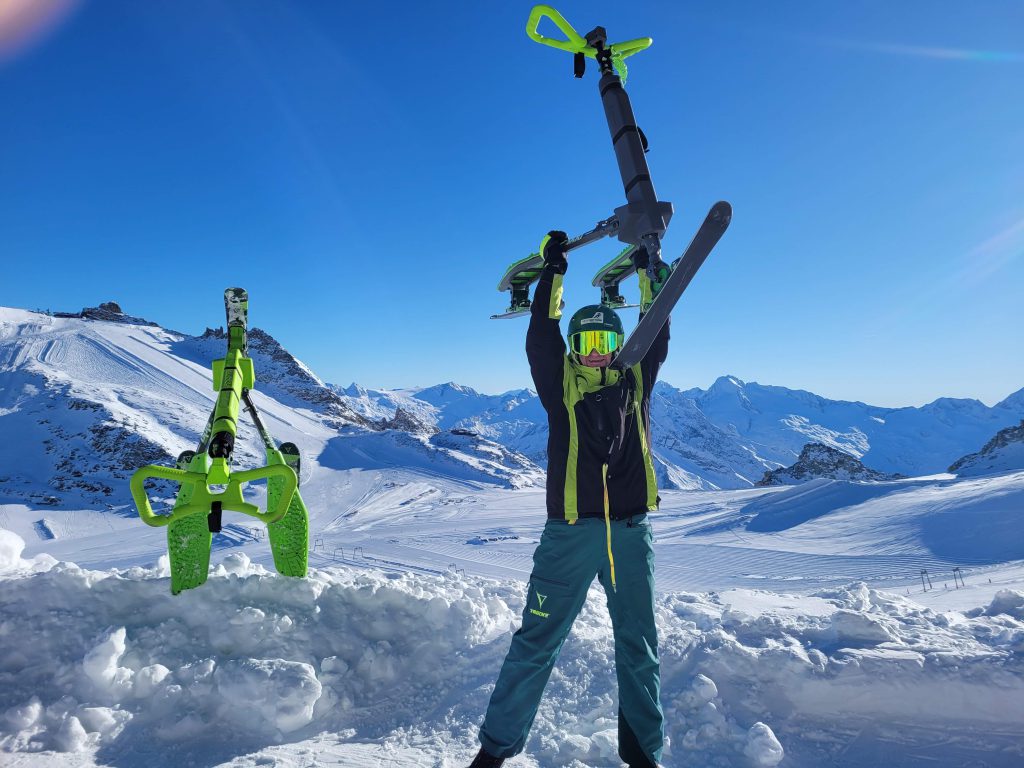
Medical recommendations
Our product is highly recommended by orthopedic doctors from all over the Poland to people dealing with after-efects of knee ligament reconstructions, meniscus, spine and hip surgeries. Doctors do not recommend double skiing or snowboarding in these cases. Winter Skki Trikke is the only one accepted form of skiing when it comes to people suffering from condequences of previous accidents (including words of world-famous orthopedist prof. Jarosław Fabiś, FMC Łódź).
12-0 for Skki Trikke

TEST - IS SKKI TRIKKE FOR YOU?
If you answer YES to any of these questions,
then Skki Trikke is the winter equipment for you!
1. Have you ever suffered a skiing or other injury?
Many Skki Trikke users have experienced injuries in the past. The equipment ensures safe, comfortable slope riding, minimizing injury risk and adding comfort.
YES/NO
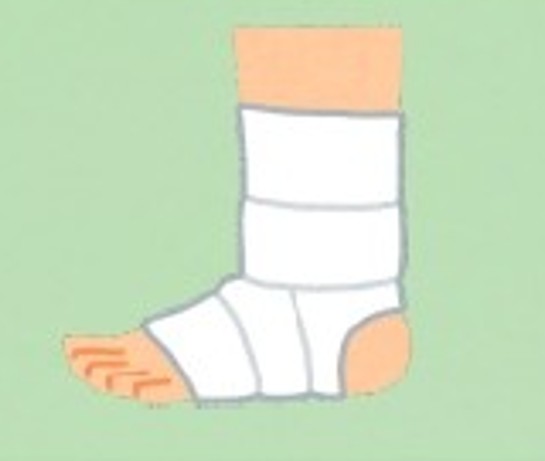
2. Do your knees hurt while (or after) skiing or snowboarding?
Skki Trikke eliminates knee rotation and excessive strain on joints, making riding enjoyable, easy, and safe.
YES/NO
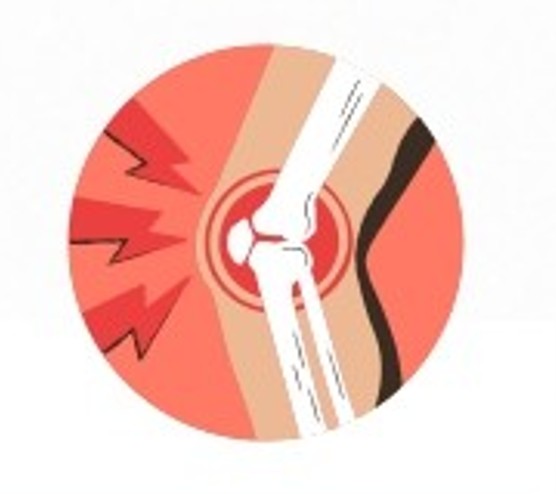
3. Do your leg muscles hurt while (or after) skiing?
With Skki Trikke, leg strain is reduced, making riding easier and less tiring than with traditional skis or a snowboard.
YES/NO
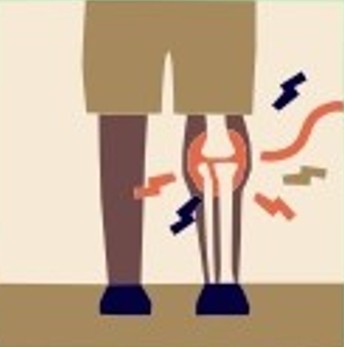
4. Do you have trouble learning to ski or snowboard?
85% of people learn to ride Skki Trikke in less than 30 minutes. Learning is quick, intuitive, and stress-free.
YES/NO
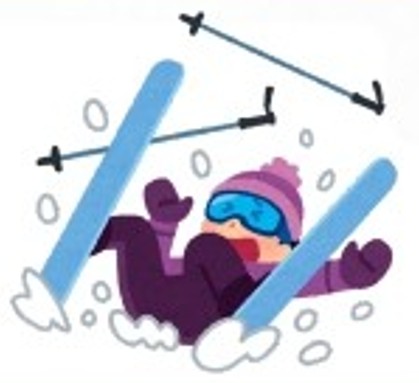
5. Do you find skiing or snowboarding difficult, and do your feet hurt in uncomfortable shoes?
Skki Trikke eliminates the problem of sore feet and uncomfortable shoes. All you need to ride is regular winter boots.
YES/NO

6. Are you overweight, struggling with mobility, or uncomfortable when riding skis or snowboard?
Skki Trikke is easy for anyone to use, regardless of physical condition or weight, and it ensures comfort and a fun ride.
YES/NO
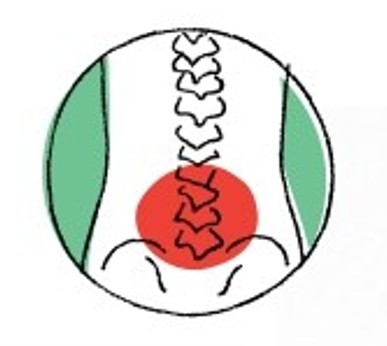
7. Do you want to feel like you're 18 again and relive your youth on the slopes?
With Skki Trikke, you can experience youthful energy, ride faster, and enjoy greater safety, regardless of slope conditions or bumps.
YES/NO
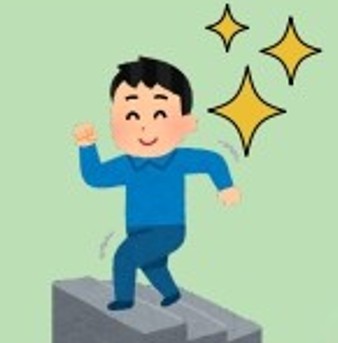
8. Are you worried about getting injured while skiing or snowboarding?
Skki Trikke minimizes the risk of falls and injuries, giving you stability, safety, and confidence on every slope.
YES/NO
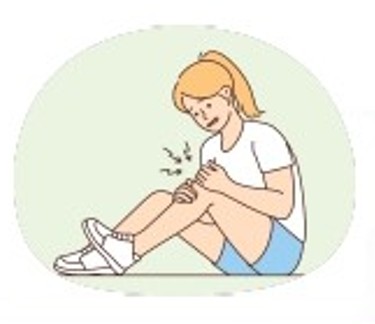
9. Do you enjoy dancing and having fun at Après-ski after a day on the slopes without changing your shoes?
Enjoy riding in comfortable shoes, and after a full day of winter fun, head straight to Après-ski in the same comfort and shoes.
YES/NO

10. Do you want to ride with your family or friends on the slopes?
No more standing at the bottom of the slope watching your loved ones have fun. Now you can join them on Skki Trikke and enjoy winter together.
YES/NO
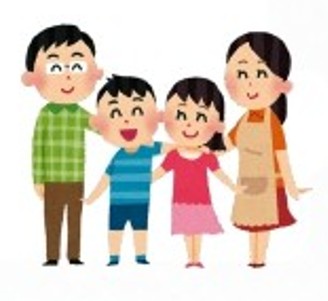
JOIN THE SKKI TRIKKE COMMUNITY
because winter sports can be easy, safe, and enjoyable!
